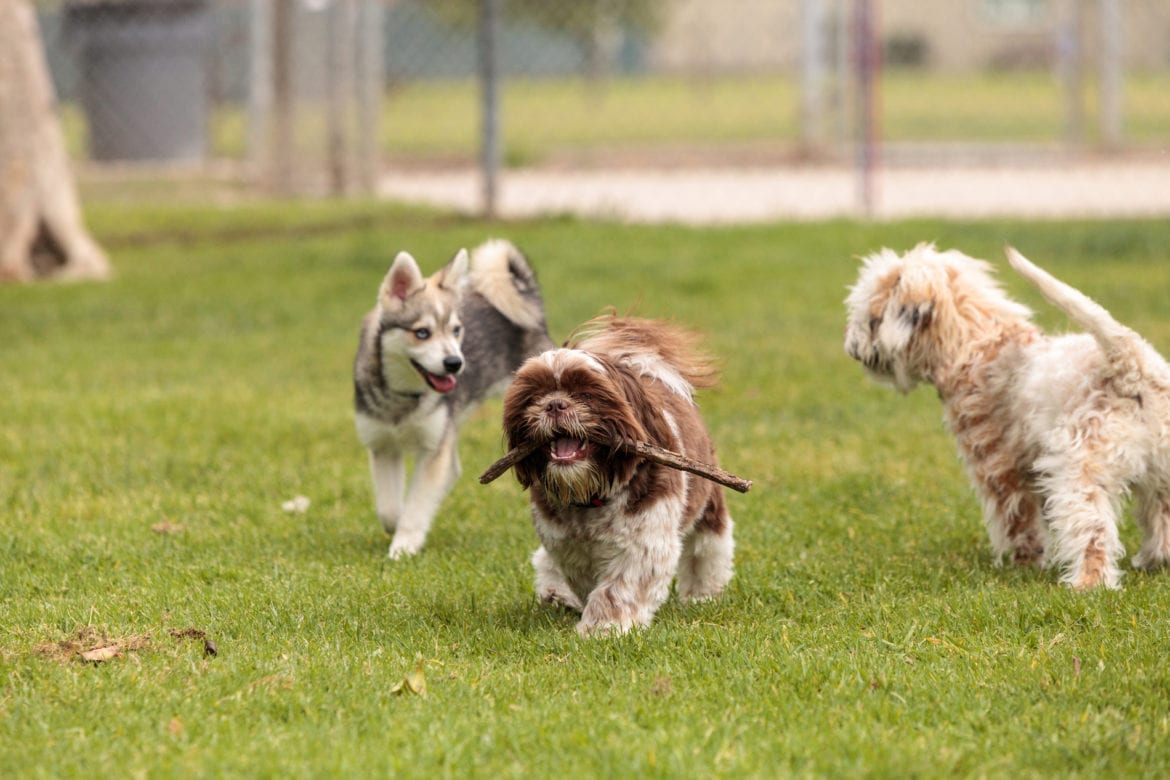All dogs need to be socialised. While the most important time for socialisation in a dog’s life is between 4-14 weeks of age it is a skill that has to be kept up throughout a dog’s lifetime. The dog park is filled with new people, new surroundings, new dogs, and different sounds and sights. If a dog is not properly socialised it can result in them being fearful and aggressive towards other dogs and people. Socialisation happens every time your dog encounters anything different than the usual. The dog park can be a great place to socialise your dog with new dogs and new people. Just as long as those encounters stay positive!
Keep an eye out
It is important to remind yourself that a dog park is a place for your dog to socialise and not for you to socialise. You must be involved in the process. For a socialisation situation to go well and be beneficial to your dog you need to keep your eyes open and remove your dog from any situation that may turn sour. Ensure that the dogs are playing fairly. If your dog has a negative experience with another dog it can be detrimental to your dog’s socialisation process. You do not want a bad experience to result in your dog being fearful of other dogs. Be prepared to remove your dog from any dangerous situations. Conversely, if your dog has a positive interaction try rewarding them to further reinforce the positive experience.
Body language
While you are keeping an eye on your dog it is a good idea to know a bit of doggie body language so you can see any issues before they become dangerous. If the dogs are wagging their tails and they are lightly bouncing it is a good sign that the interaction is going well.
If there is a dog that is stiff, has a hard stare, and tail held high it is not a good sign. This dog is not happy and it’s possible that he will start an altercation. Try to stop the interaction before it has a chance of turning into a fight.
Another thing to look for is a dog that is never making eye contact, looking away, yawning, or licking its lips, these are calming signals. This dog is stressed and may need a break or may need to be removed from the situation.
Practice Recalls and Training
Being at the dog park can be a great time to practice some recalls and other training. If you can command your dog away from a situation at any time this can be a very powerful tool. It can also be helpful to practice recalls throughout the play session. Calling your dog over putting the leash on, offering a treat, taking the leash off, and letting him go play. This simple exercise can help keep your dog from automatically assuming that when you call him it’s time to go. If he doesn’t want to go he simply will not come to you if he knows that you only call him when it’s time to go. Additionally offering him his favourite treat anytime he checks in with you is a great way to reinforce to him that coming back to you is a positive experience.
Feed your dog after a park visit
It’s advisable to feed dogs after walking or running at the park. However, make sure to allow your dog to rest for at least 30 to 45 minutes before giving a meal. If you feed your dog while it’s still panting and warm from a walk at the park, they may experience digestive health problems.
Your furry friend also needs rest and relaxation after a busy day at the park. So, why not give your pet a special dog bed? Sleeping on luxury dog beds will be a dream come true for your four-legged companion. Choose a premium-quality dog bed with a durable, removable, and easy-to-clean cover, such as an olefin acrylic fabric. Unzip the cover to turn the bed into an outdoor one during summer. You can even add faux fur on top of the bed, so your fur baby will stay warm during cold months.
Takeaway
Dogs are some of the most popular social animals in the world. They’re friendly with people and other animals, as long as they’re cared for and trained well. If you’re unsure of how to train your new pet on socialisation, you can consult a dog trainer or a veterinarian. Aside from seeking advice from a professional, read more helpful online resources to expand your knowledge and develop essential skills needed for working with dogs.
See our other posts here

